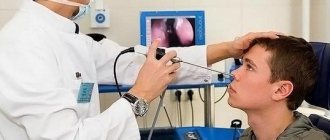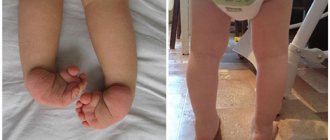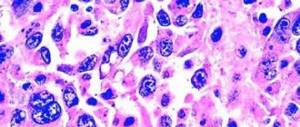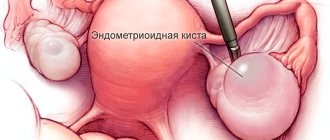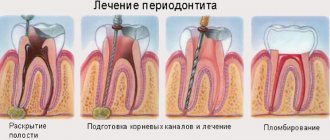retrocerebellar cyst
retrocerebellar cyst
Post by Roman123 » 13 Feb 2020, 13:59
Re: retrocerebellar cyst
Message by Vtorov A.V. » 17 Feb 2020, 12:05
Re: retrocerebellar cyst
Post by Roman123 » 17 Feb 2020, 16:49
Re: retrocerebellar cyst
Message by Vtorov A.V. » 24 Feb 2020, 10:10
retrocerebellar cyst
Post by Alixx » Jul 28, 2020, 10:42 pm
Re: retrocerebellar cyst
Message by Vtorov A.V. » 14 Sep 2020, 16:10
1. Structure of the meninges 2. Types and localization 3. CSF circulation
The brain, due to its importance for the normal functioning of the body, must be well protected from various damaging factors. In addition to the bones of the skull, the membranes of the brain play such a protective role. They create an internal protective case with a multilayer and heterogeneous structure. It is the layers of the membranes that create the cisterns of the brain, which play a large role in the functioning of the choroid plexuses and the circulation of cerebrospinal fluid.
Deformation of tanks
Tanks play a special role in the movement of cerebrospinal fluid. The expansion of the cerebral cistern signals a disorder in the activity of the cerebrospinal fluid system. An increase in the size of the large tank, which is located in the small posterior cranial fossa, leads to deformation of the brain structure quite quickly. Usually people do not experience discomfort with mild enlargement of the cisterns.
If the cistern of the brain is enlarged and a large amount of cerebrospinal fluid collects in it, they speak of a disease such as hydrocephalus. Let's consider this issue in more detail.
Structure of the meninges
The structure of the membranes of the brain includes three layers:
- hard layer, adjacent to the bones of the skull from the inside;
- arachnoid (arachnoid) membrane;
- a soft sheet directly covering the brain tissue, this component of the membrane covering the brain fuses with it.
The anatomy of the arachnoid layer is as follows: it lines the inside of the periosteum, or hard shell. At the same time it connects with a soft leaf. A gap forms between them, called the subarachnoid space.
The role of the subarachnoid space is that it contains and circulates cerebrospinal fluid. In some areas (for example, above the cerebral gyri), the subarachnoid fissure is absent; there the leaves practically merge with each other.
Between the gyri of the brain there are small gaps filled with cerebrospinal fluid, since the arachnoid membrane passes from gyrus to gyrus and does not penetrate into the depressions on the surface of the brain. The subarachnoid spaces of the central nervous system are interconnected with each other.
The lower cerebral surface and the hindbrain, or cerebellum, have especially large subarachnoid cavities.
Features in children
A cyst is a common pathology that can affect any human organ, the brain is no exception. A brain cyst is a benign tumor that has the outline of a bubble filled with fluid. Located in any area of this organ.
This pathology comes in two types, each of which has its own characteristics and treatment methods:
- Arachnoid cyst.
- Retrocerebellar cyst.
A retrocerebellar cyst is an accumulation of fluid in areas of dead gray matter in the brain. To prevent further death of brain cells, it is urgent to determine the factor provoking this process and only then begin effective treatment.
Previously, we wrote about the consequences of a cyst of the transparent septum of the brain.
This brain pathology can occur in patients of different age groups. Timely diagnosis and treatment will help the patient avoid certain complications. In such a situation, it is not recommended to engage in self-treatment, since this is an ineffective method and can harm your health and provoke complications.
A retrocerebellar cyst of the brain is a bubble of a certain size that is filled with fluid. It appears in any part of the brain where, after a certain situation, the death of gray matter, an important component of this organ, is observed.
Previously, we wrote in detail about the causes of cysts in the head of a newborn baby.
This pathology also has another name - intracerebral cyst, since its formation occurs directly in the organ itself. Its danger lies in the fact that it occurs in the affected areas, which is not a normal phenomenon.
Therefore, when diagnosing the pathology, the cause of death of the gray matter will be clarified in parallel, in order not only to prevent further death, but also to prevent other complications.
In modern medicine, several types of retrocerebellar cysts are distinguished. Depending on the specific type of pathology, the effectiveness of treatment will depend. Each cyst has its own characteristics, which must be taken into account when making a diagnosis.
The subarachnoid membrane in children is very thin. In a newborn child, the volume of the subarachnoid space is very large. As it grows, the space increases. It reaches the same volume as that of an adult by adolescence.
Varieties and localization
The main volume of cerebrospinal fluid is located in cisterns, rather large subarachnoid cavities located in the region of the trunk. The most significant of them in terms of volume is the large occipital cistern. It is located in the posterior cranial fossa under the cerebellum and above the medulla oblongata.
In the medical literature it is called cisterna cerebellomedullaris. It is the largest reservoir of cerebrospinal fluid in the brain. The basal cistern, located at the base of the brain, also contains a significant volume of cerebrospinal fluid.
Between the legs of the midbrain is the Cisterna interpeduncularis, or interpeduncular cistern. There is a cistern surrounding the area of the optic chiasm (Cisterna chiasmatis), it is in contact with the frontal lobes. There are also expansions of the subarachnoid space in the lateral fissure of the brain on both sides. Between the occipital lobes and the superior spheres of the cerebellar hemispheres there is a bypass cistern.
Between the corpus callosum and the cerebellum is the quadrigeminal cistern. The quadrigeminal cistern is distinguished by the fact that arachnoid cysts often form in it, which, as they increase, cause a symptom complex of high intracranial pressure and disorders of the cranial nerves. Pathological changes in the area of the quadrigeminal cistern often lead to disorders of visual and auditory functions, imbalance and spatial orientation.
Above and in front, the surface of the cerebellum is protected by the superior cerebellar cistern. Its upper border is the cerebellar tentorium.
Features in children: the arachnoid membrane has a very delicate structure. Even in newborns, the volume of the subarachnoid space is quite large. As you grow older, it gradually expands, reaching the volume of an adult by adolescence.
CSF circulation
Normally, there is a constant circulation of cerebrospinal fluid. It fills not only the areas of the subarachnoid space located outside the brain, but also the central cavities of the brain, which are located deep in the brain tissue. They are called cerebral ventricles. There are several of them: two lateral, the third and fourth ventricles, which are connected through the Sylvian aqueduct. The fourth ventricle serves as a link with the spinal canal of the spine.
Liquor performs the following functions:
- Washing the outer surface of the cortex.
- Circulation in the internal cavities (ventricles).
- Penetration into the thickness of brain tissue through special spaces along the brain vessels.
Thus, the brain cisterns are part of the cerebrospinal fluid circulation network, its external reservoir, and the cerebral ventricles are its internal containers.
Where does cerebrospinal fluid come from? Its synthesis occurs in the choroid plexuses of the cerebral ventricles. These plexuses look like fringed outgrowths on the walls of the ventricles of the brain. Their cavities and cisterns at the base of the brain communicate with each other.
Thus, the cistern magna is connected to the fourth ventricle through special openings. Thus, the cerebrospinal fluid synthesized in the ventricles flows into the subarachnoid space.
Features of cerebrospinal fluid circulation:
- multidirectional movement;
- carried out slowly;
- depends on cerebral pulsation, respiratory rate, dynamics of the cervical spine and the spine as a whole;
- the main volume of cerebrospinal fluid is absorbed by the venous system, a small volume by the lymphatic vessels;
- is in close connection with the membranes of the brain and brain tissue, ensuring the normal flow of metabolic processes between them.
The presence of cerebrospinal fluid creates an additional outer layer that saves the brain from shock and damage, a kind of protective “cushion”. It also compensates for changes in the size of the brain, moving in accordance with the dynamics, maintains osmotic balance in tissues, and participates in the nutrition of neurons. Through the cerebrospinal fluid, toxins and waste products formed as a result of metabolism in the cerebral tissue are removed into the venous system.
Causes of pathology
A retrocerebral cyst develops at the site of neuronal death. The following causes of gray matter necrosis are distinguished:
- trauma (trauma to the skull can also be the cause of the formation of cerebral hygroma);
- development of meningitis, encephalitis;
- hemorrhages in the brain during surgery;
- disruption of intrauterine development due to poor ecology, the mother taking certain medications;
- genetic pathologies: absence of septa in the brain, Marfan syndrome;
- suffered a stroke;
- ischemic brain damage, which causes cerebrovascular accidents;
- degenerative changes in the brain.
During diagnostic procedures, it is necessary to determine the presence of a pathological formation in the brain and the reasons for its development. Only eliminating the causes can improve the prognosis of the disease.
What is a retrocerebellar cyst?
A retrocerebellar cyst is an abnormal cavity in the posterior fossa behind the cerebellum. The cause of the formation can be congenital and acquired factors. Cysts in the structure of the brain may not manifest themselves, but sometimes they increase in size, causing compression of the adjacent parts. Cystic expansion of the retrocerebellar space in both childhood and adulthood can cause neurological deficits.
Classification:
- Retrocerebellar arachnoid cyst of the brain is a formation localized between the surface of the brain from the cerebellum and the arachnoid membrane. It develops due to an increase in the number of arachnoid membranes during brain development or under the influence of external factors. The danger of such cysts is determined by their size, exact location, and effect on the flow of cerebrospinal fluid.
- A retrocerebellar cerebrospinal fluid cyst is a cavity with membrane walls filled with liquid contents.
In patient diagnoses, the concept of a retrocerebellar cyst without additional characteristics is encountered - it is a hollow tumor located in the same area, but in the gray matter of the brain. An inferior retrocerebellar cyst is an indication of the presence of cerebrospinal fluid in the formation, which is associated with its location in the arachnoid space.
Symptoms of the disease
In many cases of arachnoiditis, symptoms may not appear at all. Most often, such pathology is detected only during examination of neurological diseases. In optochiasmatic arachnoiditis, which occurs when a cyst appears, nonspecific symptoms are observed. The degree of their severity largely depends on the size of the formation, and whether it will increase. Often, an arachnoid cyst has a general cerebral symptom that increases in intensity. This is due to the fact that the formation, which was provoked by arachnoiditis of the brain, begins to put pressure on certain areas of the brain.
So, signs that arachnoid changes have provoked the appearance of a cyst may be:
- Severe dizziness;
- Nausea and vomiting, without signs of poisoning;
- The presence of hallucinations or other psychological disorders;
- Convulsions;
- The appearance of a bursting feeling in the head;
- Impaired vision clarity and also decreased hearing;
- Presence of heaviness in the head.
Depending on where the formation was localized, what size it is, how much the cerebrospinal fluid system was affected, and whether there is growth in the formation, even serious psychological disorders may appear.
PCF cyst
Enlarge
It is worth mentioning separately about such a pathology as arachnoid cyst of the posterior cranial fossa. It can be recognized by specific symptoms. These are: bursting headaches, the presence of severe tinnitus, paralysis of certain limbs, as well as the appearance of double vision.
If serious arachnoid changes occur due to the cyst, then even epileptic seizures may occur. Moreover, such formations are also accompanied by arachnoiditis of the posterior cranial fossa.
Formations of the temporal lobes
An arachnoid cyst of the left temporal lobe is considered no less terrible (the same applies to a cyst of the right temporal region). As long as the formation on the left is small in size, the patient’s general condition is normal. However, if the cerebrospinal fluid cyst of the left temporal lobe strongly compresses important parts of the brain, which poses a great danger.
In addition to the usual symptoms, with pathology resulting from optochiasmatic arachnoiditis, a person may complain of hallucinations, panic, and obsessions. If the pathology affects the right temporal part, the overall clinical picture is not much different. In this case, on MRI images, the formation at the temple, depending on its size, will be visible either as a grain or as a small apple.
Causes
A retrocerebellar cyst occurs during fetal development or as a complication of birth trauma resulting from the death of brain cells. Instead of healthy tissue, a cavity is formed filled with cerebrospinal fluid or serous fluid. Often this is a congenital developmental feature.
Also, a retrocerebellar cyst can form for the following reasons:
- stroke;
- vascular pathologies, insufficient blood supply;
- operations performed by an insufficiently experienced surgeon or without the use of MRI control;
- severe traumatic brain injury;
- infections.
When a retrocerebellar cyst is detected among other abnormalities on MRI, people often focus on it because it is a formation that should not exist physiologically. Hypertension syndrome, various developmental anomalies, and signs of organic damage to the central nervous system require much more attention.
Congenital retrocerebellar cyst is a normal variant. Despite the fact that its sides often measure more than 1 cm, the formation occupies a certain place in the brain, the cyst has no activity, and almost never increases in size. Exceptions include injuries and infectious diseases.
Prevention
Retrocerebellar cyst is an acquired condition. Rules should be followed to reduce the risk of its occurrence.
- During pregnancy, a woman should avoid infections and taking teratogenic and embryotoxic drugs. X-rays should not be given to pregnant women.
- A complete diet, balanced in proteins, fats, carbohydrates, vitamins and microelements, during pregnancy.
- Avoid trauma to the skull.
- Early diagnosis and treatment of neuroinfections.
- Prevention of atherosclerosis.
- Prevention of hypercoagulation.
Signs
Large retrocerebellar cysts (from 3 cm in diameter) can provoke:
- throbbing headache;
- dizziness;
- increased intracranial pressure;
- impairment of vision or hearing;
- trembling of limbs;
- motor dysfunction (paresis, paralysis);
- convulsions;
- impaired coordination of movements, instability of gait (with compression of the cerebellum);
- periodic loss of consciousness.
Symptoms appear on one or both sides of the body. If there are persistent disorders and the cyst increases in size, the formation is considered dangerous and requires its complete or partial surgical removal. Treatment and observation of the patient is carried out by a neurosurgeon.
Pathogenesis of disease development
The formation of a cystic cavity in place of dead cells can be considered the body’s protective reaction to damage, which is designed to protect healthy cells. However, such a barrier most often only worsens the situation. The process itself begins to move in a “vicious circle”. The walls of the cyst put pressure on the surrounding tissue, circulatory disturbance in these tissues begins again, the cells die, and the cyst grows.
Most nonspecific symptoms occur due to impaired circulation of cerebrospinal fluid in the brain, resulting in increased intracranial pressure and the development of secondary hydrocephalus. Focal symptoms arise as a result of compression of a certain area of the brain by a large cyst. As it grows, it puts pressure on neighboring areas of the brain, thereby disrupting their functioning and structure. Often contributes to further cell death.
Diagnostics
If you suspect a retrocerebellar cyst in the head of an adult, you should contact a neurologist and ophthalmologist for examination. If changes are detected in a child, it is advisable to undergo additional consultations with a pediatrician or geneticist.
| T2-weighted sagittal MRI image of the brain of a child with a retrocerebellar cyst in sagittal and axial projections |
Fetal MRI - 1-3 images. The 1st image revealed an enlargement of the 4th ventricle connecting to the cyst. The cerebellar vermis is visible, but displaced. Images 2 and 3 show insufficient connection of the 4th ventricle with the cerebrospinal fluid and dilatation of all ventricles. The remaining images (MRI of a newborn) confirm the previous conclusions and the presence of hydrocephalus.
A retrocerebellar cerebrospinal fluid cyst may be discovered accidentally during a screening test (during pregnancy) carried out to diagnose abnormalities in the structure of the fetal brain. Sometimes a cyst or several cystic formations are detected in the first years of a child’s life during an ultrasound scan of the newborn brain. CT and MRI are the most common ways to detect cysts in adults.
General information
So, what is a cerebrospinal fluid cyst? This is a spherical neoplasm that is filled with cerebrospinal fluid (CSF), which is why the disease got its name.
Arachnoid space
It is arachnoid because it is located in the arachnoid membrane of the brain. In the place where the neoplasm is formed, the membrane thickens and divides into two petals, and liquid accumulates in the gap between these two petals.
The location of the cyst varies; it can be located in the fossa above the sella turcica or near the cerebellopontine angle.
In terms of prevalence, this disease is not rare, since approximately 3–4% of the world's population suffers from it. However, due to the small volume of the tumor, many do not even realize there is a problem.
Males are more susceptible to this disease than females.
Moreover, not only adults, but also children suffer from this disease. The development of such a cyst in a child follows the same scenario as in an adult.
The most dangerous thing about this disease is that it may not make itself felt for a long time and is discovered completely by accident, during a routine examination or during the diagnosis of another disease.
Cyst sizes: which ones are dangerous?
In children, a cyst can be dangerous if its diameter is more than 30 mm. Typically, neurologists refer for an EEG (to check the bioelectrical activity of the brain) when they detect a cyst with sides, for example, 32x18x14 mm. If a retrocerebellar cyst appears congenitally, and not as a result of injury or neuroinfection, the formation is considered a developmental option and does not require additional examinations or special treatment.
A retrocerebellar cyst in adults, if it does not damage surrounding tissues, is not considered a disease. A dangerous sign is a constant increase in the size of the cyst. Take into account the education parameters established during the initial diagnosis. If a cyst measuring 23x22x36 mm is discovered for the first time, and a repeat MRI reveals its increase to 23x35x46 mm, a clear growth of the formation is noticeable. It is these cysts that are dangerous.
A small cyst is considered normal (a development option) and does not require attention. Its presence is not taken into account when diagnosing diseases.
A retrocerebellar cyst of the brain can provoke dysgenesis of the lower parts of the cerebellar vermis, the left or right cerebellar hemisphere, a local upward displacement of its tentorium, a slight deformation of the cortical plate of the occipital bone, and moderate compression of other adjacent brain structures. The presence of these deviations does not affect life.
You need to pay attention not to the size of the retrocerebellar cyst, but to the neurological symptoms and its dependence on the cyst or other pathologies.
How to react if the cyst grows?
Changes in the size of the retrocerebellar cyst occur from infancy to adulthood. Normally, education increases in accordance with a person’s height.
In adults, the cyst should not increase, but there may be minor changes in its size and shape. Such changes are considered a variant of the norm. When comparing indicators, pay attention not only to size, but also to volume.
For example, if you encounter this situation:
| MRI time | Cyst size | Cyst volume |
| First examination | 19x26x41 mm | 20.25 cu. cm |
| One year later | 25x35x21 mm | 18.37 cu. cm |
| 2 years after diagnosis | 29x18x37 mm | 19.31 cu. cm |
There is no need to worry - this is normal. Despite the constant change in proportions, the volume of the cyst is stable.
The cyst has grown since the last examination: what to do?
If a slight growth of the cyst is diagnosed (up to 0.2-0.3 cm), there is a possibility of measurement error. A re-examination is required in 3-6 months. There is no point in doing an MRI earlier, since changes in the size of the cyst will not occur in less time.
Types of operations
The choice of type of operation depends on the location of the cyst and its size. There are three types of surgical intervention:
- Endoscopic surgery. It is considered the most modern and low-traumatic method of surgical treatment. This is a microsurgical intervention performed using an endoscope and surgical instruments. An endoscope is inserted through a small puncture hole in the skull, then a small incision is made on the wall of the cyst with instruments and the fluid is sucked out. This operation cannot be performed for malignant neoplasms. And it is not always possible to reach cysts that are located quite deep inside the brain.
- Intracranial shunting. This type of surgery is used for frequent relapses of the disease, when there is a constant flow of fluid. The fluid from the cyst is diverted using a special shunt to other cavities for which its presence is considered natural.
- Neurosurgical operation to remove the cyst. The skull is opened (craniotomy). The cyst is completely removed. This operation is quite traumatic, but it eliminates relapses of the disease and gives the patient a chance for a complete recovery. This surgical intervention can be performed if the cyst is located in a place accessible for craniotomy.
In the postoperative period, the doctor must prescribe maintenance therapy: vitamins and medications, the action of which is aimed at strengthening the vascular walls and improving microcirculation of blood and cerebrospinal fluid.
Treatment
In medical practice, there are cases of large cysts that require correction. In reviews of treatment, patients note that they were able to get rid of the retrocerebellar cyst of the brain only after surgery. Symptomatic treatment with drugs is used only to eliminate focal complications, for example, circulatory disorders.
Cyst removal surgery
Absolute indications for surgery:
- Hypertension syndrome caused by an overgrown retrocerebellar cyst measuring 2 cm in diameter or hydrocephalus.
- Neurological deficit is improper functioning of the motor system, disturbances in sensitivity, auditory and visual perception, hallucinations, convulsions and other neurological symptoms caused by damage to certain parts of the central nervous system. With a retrocerebellar cyst that is not filled with cerebrospinal fluid, such complications are extremely rare and occur with intensive growth of the formation.
- When performing CT and MRI over time, a constant increase in the size of the cyst was detected, even in the absence of symptoms.
- Negative changes on the EEG. Usually caused by a tumor or other disorders, however, if there are indications for brain surgery, doctors often decide to remove not only the tumor, but also the cyst.
Features of therapy
If a retrocerebellar benign brain tumor does not provoke the development of unpleasant symptoms and does not increase in size, then treatment is not required. It is enough for patients to be observed by a neurologist.
Drug therapy
How to treat a retrocerebellar cyst of the brain? If the tumor grows slowly, conservative therapy may be required, which involves the use of antibiotics and antiviral drugs. Additionally, immunomodulators are prescribed, which increase the body's resistance and help cope with autoimmune pathologies.
For bleeding disorders and elevated cholesterol levels, Aspirin and Pentoxifylline are indicated. Enalapril and Capoten can normalize blood pressure. Anticoagulants will help eliminate adhesions. Nootropics are widely used to restore the supply of glucose and oxygen to the brain.
Surgery
In what cases is it necessary to remove a retrocerebellar cyst of the brain? If the tumor rapidly increases in size, causing severe symptoms, then surgical treatment is required. Before surgical manipulations, it is necessary to carefully examine the patient and eliminate the factors that provoke the appearance of such neoplasms. The tactics and type of operation are determined based on the size and location of the tumor:
- craniotomy. The most traumatic type of surgery, which allows you to completely remove the cyst and surrounding tissue;
- shunting. The method is used when there is a constant flow of fluid into the cyst. Shunting allows you to connect damaged vessels, which helps normalize the outflow of fluid from the cyst;
- endoscopy. This is a modern and least traumatic technique that involves piercing the skull and then removing the formation or suctioning out the fluid. This treatment is rarely used, since the retrocerebellar neoplasm is located deep in the gray matter (unlike an arachnoid cyst of the brain).
After surgery, patients need long-term rehabilitation, which is aimed at restoring normal brain function.
Consequences of a large retrocerebellar cyst (medical practice)
Giant cysts can cause complications due to compression or displacement of brain structures.
| Consequences | Reasons for appearance | Why are they dangerous? | Results of the operation |
| Syringomyelia (with a huge cyst) | Obstruction of the flow of cerebrospinal (arachnoid) fluid | Shooting pain in the head, neck and shoulders, gait disturbances, dizziness, paresthesia | Improvement of condition. Reducing the size of the retrocerebellar cyst, reducing the symptoms of syringomyelia |
| Cerebellar herniation | Pressure on the cerebellum | Neurological disorders, cerebral edema | Reducing the compressive effect on the cerebellum and brainstem |
| Spinal cord compression | Pressure on the spinal cord from an enlarged cyst | Pain in the head and neck, impaired fine motor skills, paresthesia (impaired sensitivity), dissociated sensory disturbances (a person does not feel pain or temperature), muscle spasticity (uncontrolled muscle tension) | Decompression of the posterior cranial fossa, partial or complete removal of the cyst, elimination of arachnoid adhesions, restoration of normal cerebrospinal fluid flow |
Diagnostic methods
Asymptomatic retrocerebellar cysts are most often discovered incidentally during examination for another pathology. In some cases, the reason for examination is symptoms associated with concomitant hydrocephalus, the need for diagnosis when examining conscripts or athletes.
Detection of a retrocerebellar cyst is possible through magnetic resonance imaging, which accurately shows the size, localization of the cystic cavity, the state of the cerebrospinal fluid tract and brain substance, as well as the dynamics of its volume over time.
large retrocerebellar cyst
Often, a retrocerebellar cyst is accompanied by an expansion of the cerebrospinal fluid subarachnoid spaces and large cerebrospinal fluid tracts. With a large size of the formation, thinning of the bones of the posterior cranial fossa is noticeable.
MRI with contrast makes it possible to clarify the relationship of the cystic cavity with the liquor cisterns and subarachnoid space, as well as to exclude a tumor process. Electroencephalography, ultrasound with Doppler of the vessels of the head and neck, and CT cisternography are prescribed as additional diagnostic measures.
To diagnose retrocerebellar cysts in newborns and young children, ultrasound is used, which provides a sufficient amount of information due to the open large fontanel. This procedure is safe and painless for the baby, does not require special preparation and is carried out in the maternity hospital.
To detect a cyst, there is a special diagnosis:
- Magnetic resonance imaging is the most commonly used. It provides fairly accurate data and a complete description of the current state of the disease.
- Doppler ultrasound scanning is used as an additional diagnostic method. It allows you to identify more detailed information about the tumor.
- Diagnosis through blood pressure monitoring. To determine the nature of the formation (tumor or cyst), a contrast agent is injected, to which the brain tissue reacts.
In addition to the above diagnostic methods, ECG and computed tomography are used.
- MRI of the brain with contrast - determines the location, parameters, structure, differentiates between benign and malignant formations.
MRI of the brain.
- Dopplerography of the vessels of the head and neck excludes cerebral circulation disorders.
- Ultrasound of the heart - detects disturbances in heart rhythm, determines the presence or absence of heart failure.
- Blood clotting test.
- Determination of cholesterol concentration in the blood.
- Study of markers of autoimmune diseases.
- Puncture of cerebrospinal fluid - to identify neuroinfections.
Answers to common questions
Often people are not information savvy when contacting a neurologist or neurosurgeon. As a result, many questions arise that cause dissatisfaction among doctors and emotional discomfort among patients. The following information will help you get an idea of the disease, quickly understand all the information that a specialist will tell you during a face-to-face consultation, and ask substantive questions if necessary.
Can a retrocerebellar cyst burst?
A cyst is an empty space filled with cerebrospinal fluid. It has no brain cells. If the cyst forms as a result of injury, it may open (burst). In this case, the cerebrospinal fluid will leak into the subarchnaidal space. Negative consequences for the brain are excluded.
How to find out the type of cyst?
The exact name of the cystic formation is determined based on the results of MRI, EEG and anamnesis. When making a differential diagnosis, the location of the cyst, the presence of severe traumatic brain injury, accompanying symptoms, as well as the results of examinations conducted several months or years ago are taken into account.
Where is the retrocerebellar cyst located?
Behind the cerebellum, in the region of the posterior cranial fossa.
How to distinguish a retrocerebellar cyst from other brain disorders?
Headache attacks, nausea, vomiting, weakness, sleep disturbances
may be associated with
encephalopathy, osteochondrosis of the cervical spine.
A retrocerebellar cyst can provoke the listed symptoms only when it grows to a large size due to compression or displacement of nearby brain structures.
Do an MRI, otoneurological tests, and a study of cerebrospinal fluid pressure to exclude intracranial hypertension. Get a full examination to identify and eliminate the source of problems in brain activity.
The following will help determine the causes of problems in the functioning of the brain:
- MRI of the cervical spine;
- Dopplerography of head and neck vessels;
- examination by an ENT doctor;
- blood pressure control to exclude hypertension;
- blood test to detect anemia, an infectious process in the brain.
In most cases, retrocerebellar cysts do not manifest themselves in any way, but are detected accidentally. For example, if you or your child have intracranial hypertension, encephalopathy, congenital agenesis or underdevelopment of the cerebellum, the Dandy-Walker symptom complex, or other developmental anomalies or tumors, then the problem is not in the cyst, but in concomitant diseases.
What should people with a retrocerebellar cyst not do?
There are no clear restrictions, but in the interests of the patient:
- Do not get vaccinated without consulting your doctor. For example, the DPT vaccination involves introducing a small dose of infection into the body. If complications arise, the brain will be damaged, which will affect the size of the cyst. In the presence of episyndrome, vaccinations are prohibited; the doctor must issue a medical exemption.
- It is advisable to measure your blood pressure regularly, preferably daily, in order to notice sudden deterioration in time.
- Stop drinking alcohol, limit smoking to avoid vascular spasms and intoxication.
- Prevention of viral infections, poisonings, their timely treatment (until complete recovery).
- Avoid bruises, head injuries, and it is advisable to refrain from practicing martial arts.
Any of the listed factors can provoke increased growth of the cyst and its rupture.
What to do if a large retrocerebellar cyst is discovered?
In the absence of negative symptoms, it is necessary to re-do an MRI after six months. If there are no negative dynamics, repeat the examination in a year. See a neurologist every few years. If there is no dynamics of cyst growth, there is no problem that can be solved with neurosurgery. Women with a retrocerebellar cyst can become pregnant and have children - this cannot provoke tumor growth.
If the cyst causes compression of a certain lobe of the cerebellum or other adjacent tissues, neurological symptoms are diagnosed, the decision to perform the operation is made by the doctor together with the patient, based on the medical history, MRI findings, and EEG. The presence of a retrocerebellar cyst does not provide contraindications to any methods of treating other diseases.
Prevention and prognosis
Retrocerebellar arachnoid cyst can be prevented by following general rules, since specific prevention does not exist today.
To avoid the development of a cyst, you must:
- completely give up bad habits;
- avoid skull injuries;
- monitor the correct course of pregnancy and contact an obstetrician-gynecologist if there is the slightest change in your health;
- provide timely treatment of diseases;
- massage the neck;
- undergo preventive examinations at the clinic on a regular basis.
The prognosis is favorable, which is determined by a benign course and complete recovery after surgery. If treatment is not timely, there is a high risk of complications that can lead to death.
If you think you have a retrocerebellar arachnoid cyst
and the symptoms characteristic of this disease, then doctors can help you: a neurologist, a therapist, a pediatrician.
Source
Did you like the article? Share with friends on social networks:

